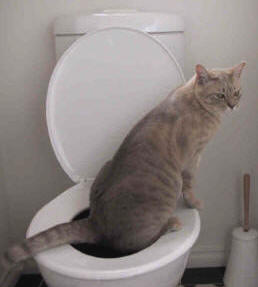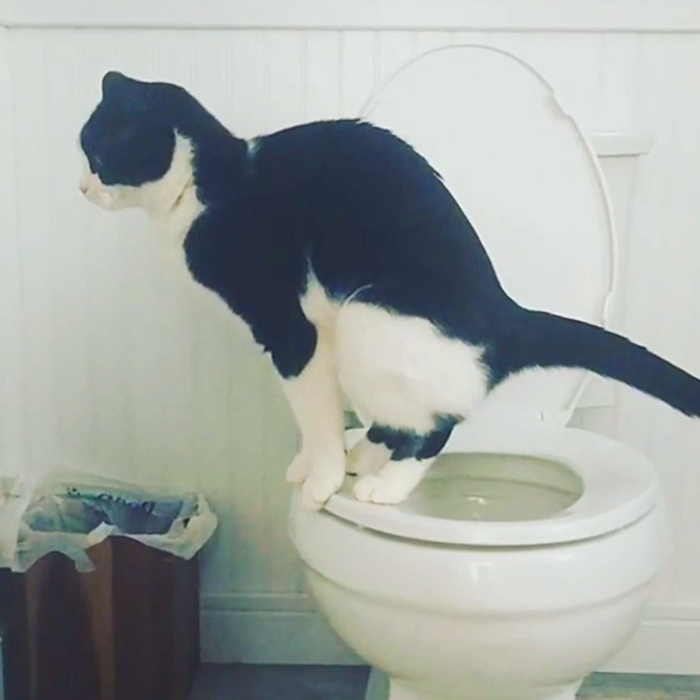Learning the Risks of Flushing Animal Waste Down the Toilet
Learning the Risks of Flushing Animal Waste Down the Toilet
Blog Article
Were you trying to find resources concerning 10 Things You Should Never Flush Down The Toilet?

When it pertains to taking care of waste, specifically animal waste, many individuals usually consider the hassle-free choice of flushing it down the bathroom. However, this seemingly very easy remedy can have significant consequences for the environment and public health. In this short article, we'll check out why flushing animal waste down the commode is a negative idea and supply alternate methods for proper disposal.
Intro
Correct garbage disposal is essential for maintaining ecological sustainability and public health. While it may seem safe to flush animal waste down the commode, it can cause various concerns, both for the environment and human health.
Risks of flushing pet waste
Environmental effect
Flushing animal waste presents damaging microorganisms and virus into waterways, which can adversely impact water ecosystems. These microorganisms can pollute water resources and harm marine life, interrupting fragile environments.
Public health problems
Animal waste includes damaging germs such as E. coli and Salmonella, which can present severe wellness threats to people. Purging animal waste down the toilet can pollute water materials, resulting in the spread of illness and infections.
Alternatives to flushing
Instead of flushing pet waste down the bathroom, there are a number of alternative disposal approaches that are extra eco-friendly and hygienic.
Composting
Composting pet waste is an environmentally friendly way to take care of it. By composting, raw material is broken down into nutrient-rich dirt, which can be used to feed gardens and plants.
Land fill disposal
Disposing of pet waste in a landfill is an additional choice. While not as eco-friendly as composting, it is a safer choice to flushing, as it prevents the contamination of water resources.
Pet dog waste disposal systems
There are specific animal garbage disposal systems readily available that safely and hygienically dispose of pet waste. These systems often use enzymes to break down waste and get rid of smells.
Actions to appropriate pet waste disposal
To make sure proper disposal of animal waste, comply with these actions:
Scooping and bagging waste
Consistently scoop and bag pet waste using eco-friendly bags. This prevents waste from contaminating the environment.
Using designated waste bins
Dispose of bagged animal waste in marked waste containers, such as garden compost bins or garbage dump bins. Prevent flushing it down the bathroom whatsoever costs.
Cleansing can and animal areas regularly
Regularly tidy can and animal locations to avoid the buildup of waste and microorganisms. Use pet-safe cleansing products to preserve health.
Benefits of correct disposal methods
Adopting appropriate disposal methods for animal waste supplies a number of advantages:
Minimized environmental pollution
Correct disposal methods minimize the risk of environmental pollution, securing waterways and ecological communities from contamination
Decreased risk of water contamination.
By avoiding flushing animal waste down the commode, the threat of water contamination is considerably minimized, guarding public health.
Boosted sanitation and hygiene
Proper disposal methods promote better hygiene and health, producing a more secure setting for both human beings and pets.
Final thought
To conclude, flushing animal waste down the toilet is hazardous to read more the setting and public health. By taking on different disposal approaches and following correct waste administration methods, we can decrease the adverse effect of animal waste and contribute to a cleaner, healthier earth.
What To Do With Dog Poo – The Do's And Don'ts Of Disposing Of Faeces
Dog poo bins
Some councils provide dedicated dog waste bins in popular dog-walking areas that can take dog poo that has been bagged but you can legally dispose of dog waste in any public litter bin, as long as it is securely bagged. This also applies to your wheelie bin at home.
Do not flush
Water companies do not recommend flushing dog faeces down the toilet because certain parasites can survive the water processing treatment and are potentially harmful to humans. You should also never consider flushing dog poo that has been bagged down the toilet as the bags will not break down and instead create severe blockages in the sewage system.
In the woods
The Forestry Commission promotes a ‘stick and flick’ method for dealing with waste in the woods. This means finding a stick and using it to flick any poo from off the path so that it is out of the way of other walkers. You could also bury it as long as it is not in an area where there might be livestock.
Livestock
Parasites found in dog poo can be transmitted to livestock if they inadvertently eat infected faeces that has been left on grazing land. This could result in the death of sheep or abortion in cattle so you should always make sure you pick up your dog’s waste in fields where livestock could be present.

Regularly tidy can and animal locations to avoid the buildup of waste and microorganisms. Use pet-safe cleansing products to preserve health.
Benefits of correct disposal methods
Adopting appropriate disposal methods for animal waste supplies a number of advantages:
Minimized environmental pollution
Correct disposal methods minimize the risk of environmental pollution, securing waterways and ecological communities from contamination
Decreased risk of water contamination.
By avoiding flushing animal waste down the commode, the threat of water contamination is considerably minimized, guarding public health.
Boosted sanitation and hygiene
Proper disposal methods promote better hygiene and health, producing a more secure setting for both human beings and pets.
Final thought
To conclude, flushing animal waste down the toilet is hazardous to read more the setting and public health. By taking on different disposal approaches and following correct waste administration methods, we can decrease the adverse effect of animal waste and contribute to a cleaner, healthier earth.
What To Do With Dog Poo – The Do's And Don'ts Of Disposing Of Faeces
Dog poo bins
Some councils provide dedicated dog waste bins in popular dog-walking areas that can take dog poo that has been bagged but you can legally dispose of dog waste in any public litter bin, as long as it is securely bagged. This also applies to your wheelie bin at home.
Do not flush
Water companies do not recommend flushing dog faeces down the toilet because certain parasites can survive the water processing treatment and are potentially harmful to humans. You should also never consider flushing dog poo that has been bagged down the toilet as the bags will not break down and instead create severe blockages in the sewage system.
In the woods
The Forestry Commission promotes a ‘stick and flick’ method for dealing with waste in the woods. This means finding a stick and using it to flick any poo from off the path so that it is out of the way of other walkers. You could also bury it as long as it is not in an area where there might be livestock.
Livestock
Parasites found in dog poo can be transmitted to livestock if they inadvertently eat infected faeces that has been left on grazing land. This could result in the death of sheep or abortion in cattle so you should always make sure you pick up your dog’s waste in fields where livestock could be present.

We hope you liked our section on . Thanks a lot for taking a few minutes to read through our article post. So long as you enjoyed reading our article if you please be sure to share it. Kudos for your time. Revisit us soon.
Call Today Report this page